Some time ago I ordered one of the famed XM-L T6 drop-ins from Manafont. When it arrived, I was not really impressed with its output. Underwhelmed would be the proper description of what I felt then. It drew only 1,5A on high. So, like any flashaholic worth his salt, I decided to fix it.
First step: disassembly:
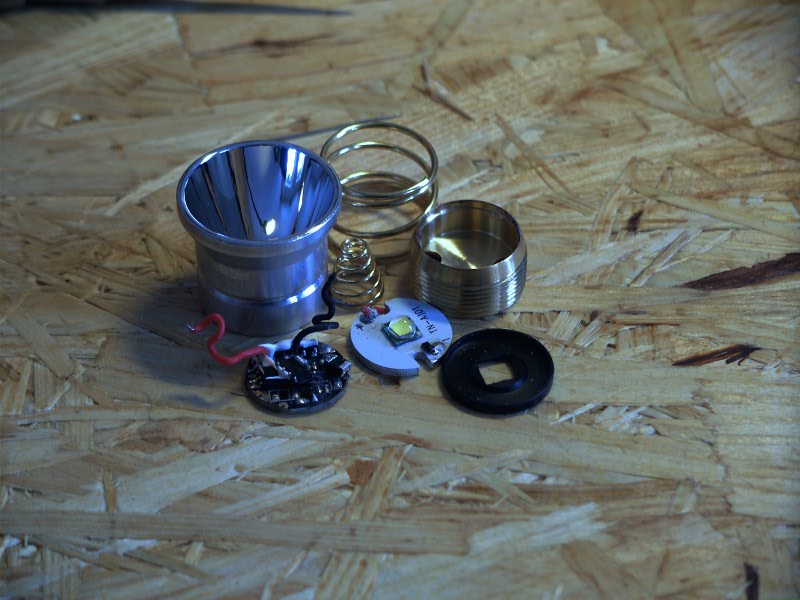
Unfortunately, I was a bit too enthusiastic with the hot air...
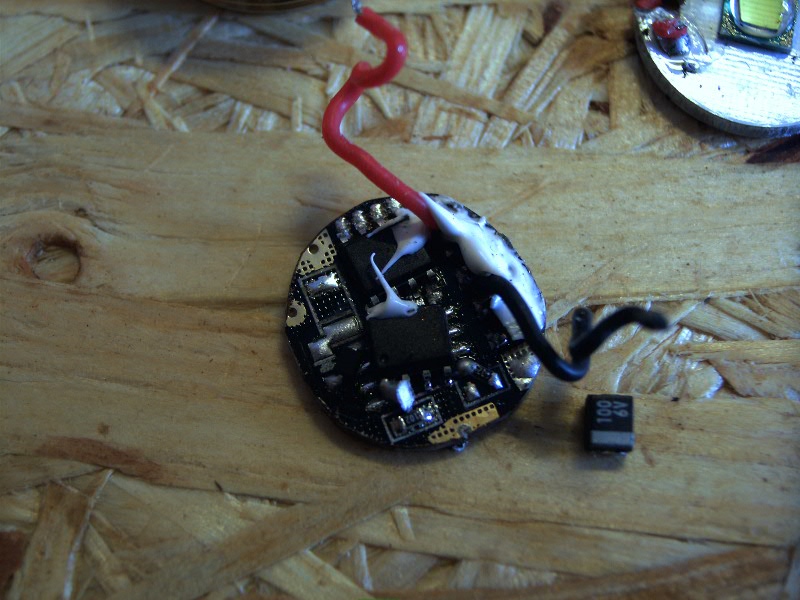
It's dead, Jim.
Well, I decided to revive this corpse. Not only revive, but improve. First, a new head driver PCB:
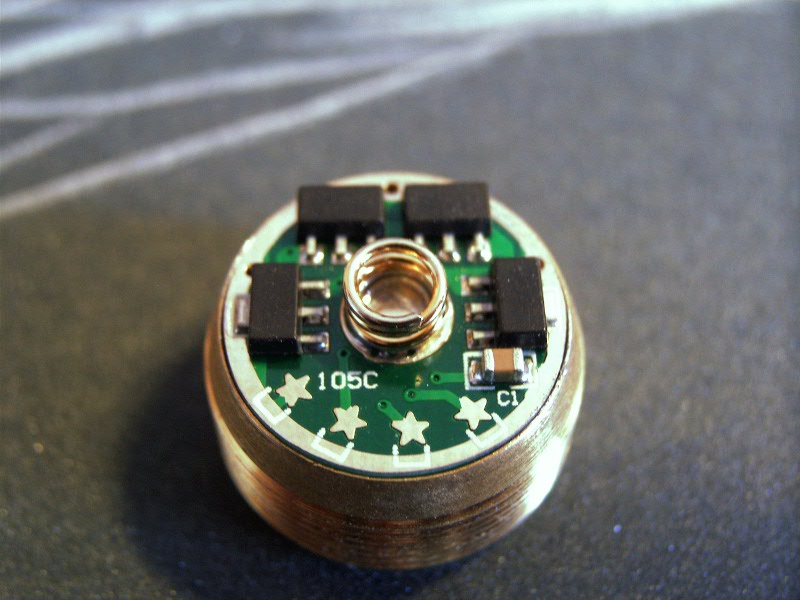
But I was really fed up with cramming the driver program into the ATtiny13, so I decided to replace it with a bigger model:
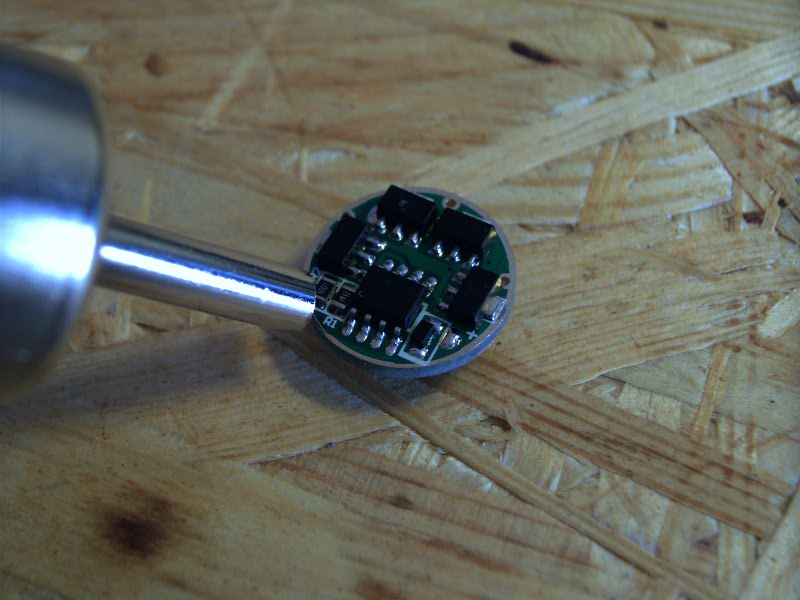
Igor, fetch me a brain!
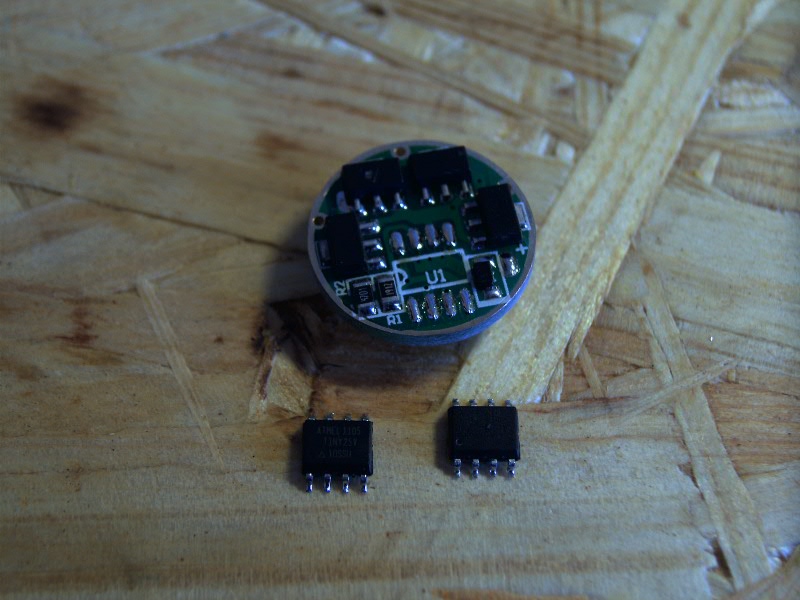
Unfortunately, the only pin-compatible chip is the ATtiny25V-10 SSU. Initially, I planned to use a ATtiny85V. But those (and the ATtiny45) are only available in the SU package, which is too wide.
Next, I waited for a lightning strike modified the BLF-VLD to take advantage of the increased program and data space. The initial flash programming was done before the chip was soldered to the board.
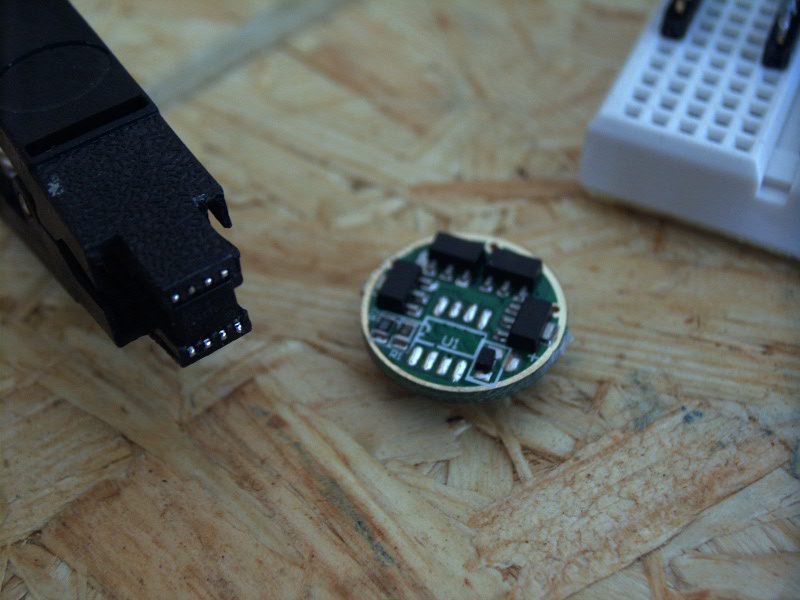
Now I added some components for proper click detection. It is easy to add to this PCB, as the I/O-pins needed are connected to the stars on the backside. A 100nF ceramic capacitor in series with a 10mΩ resistor and a diode is all it needs.
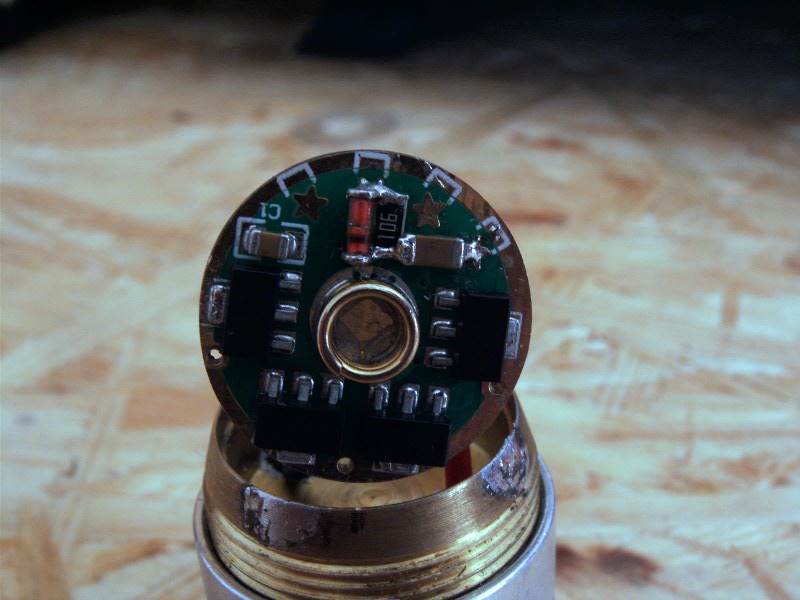
The main problem with this driver is the spring. It is too short to make contact to the battery in an L2P. Another problem is that the downward components are not mechanically protected. They are making direct contact with the flashlight body in the Sky Ray Seraph clone.
But there is an easy solution to this:
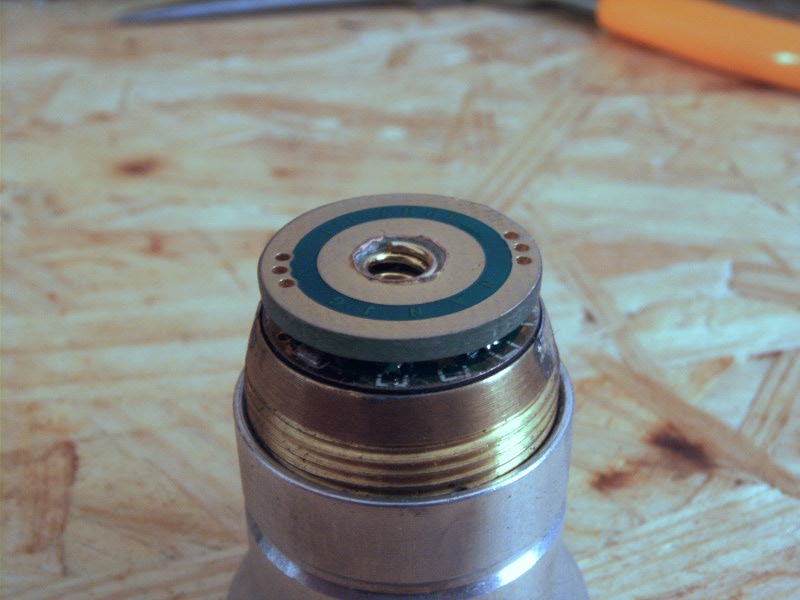
The PCB is a left-over from a 4 x AMC7135 I used for harvesting the regulator chips. I sanded down the component side to remove the copper traces and drilled a 5mm hole. This extra PCB is also an excellent base to mount a proper spring.
And here it is, back from the dead:

The main improvement over the standard ATtiny13-equipped drivers is the increased flash-size. This baby is programmable and has battery protection. It uses an additional special click-sequence to enter the extended group and sports a whopping 19 different modes (ten of which are terribly annoying strobe or morse modes). And there are still around 100 bytes program flash free.